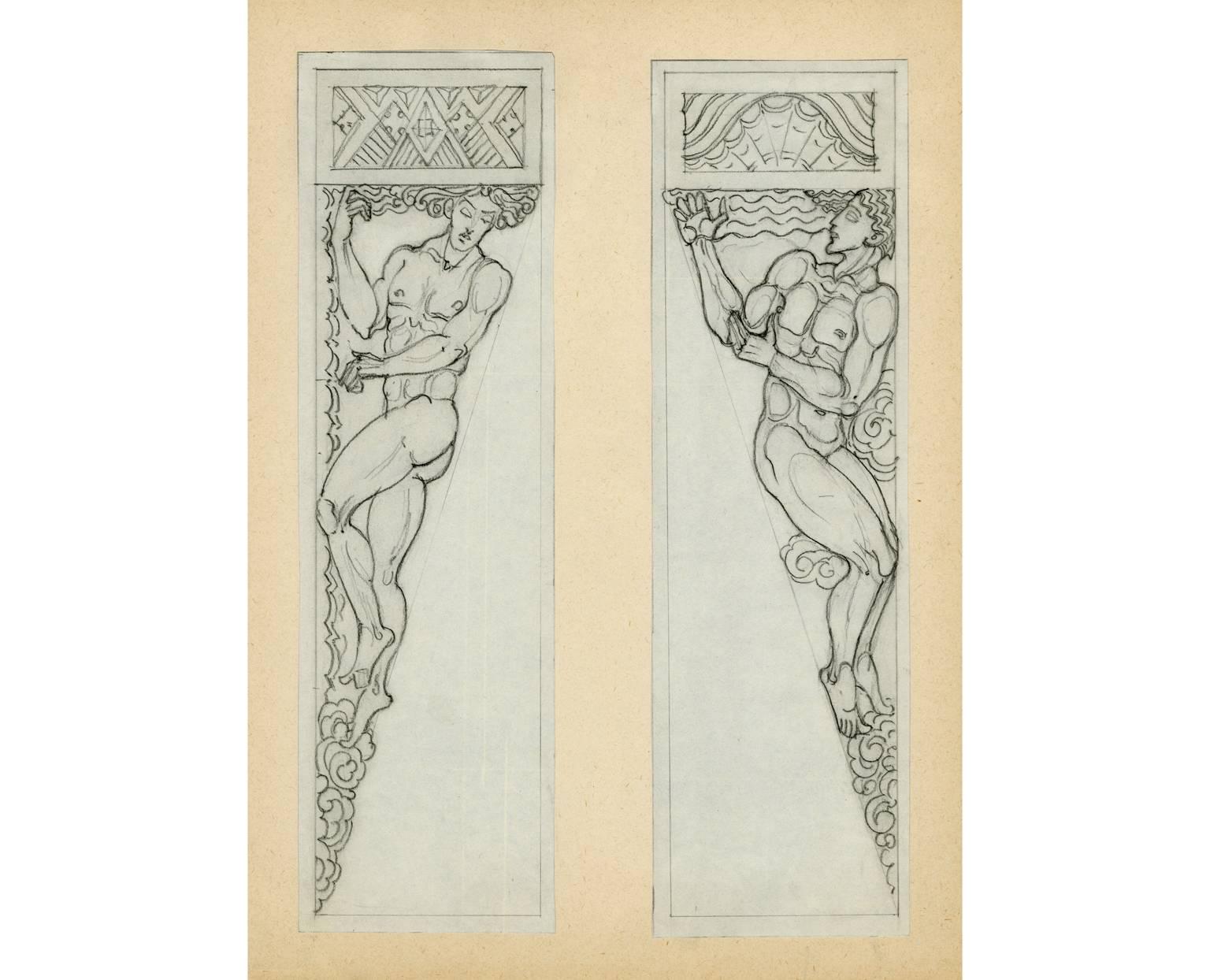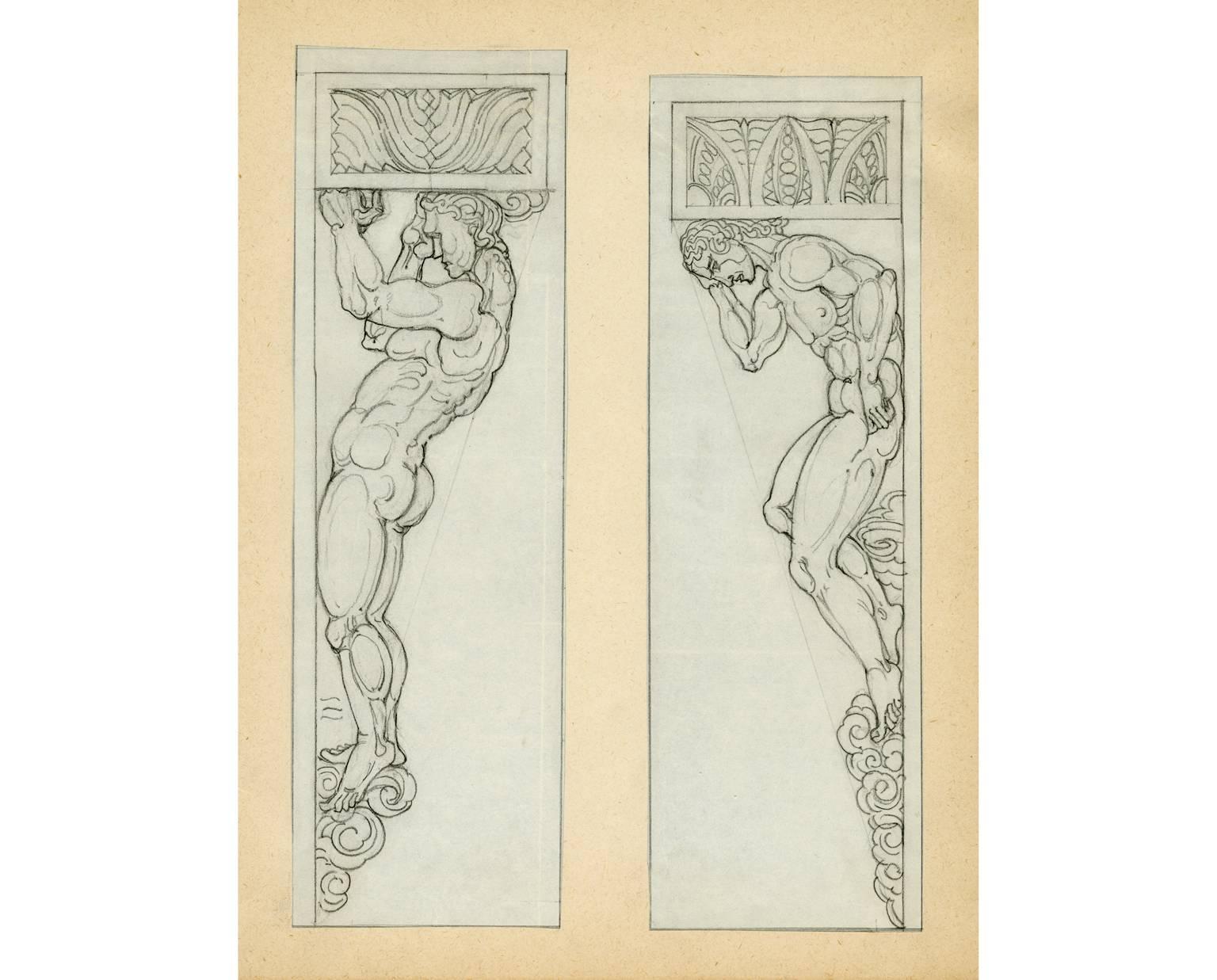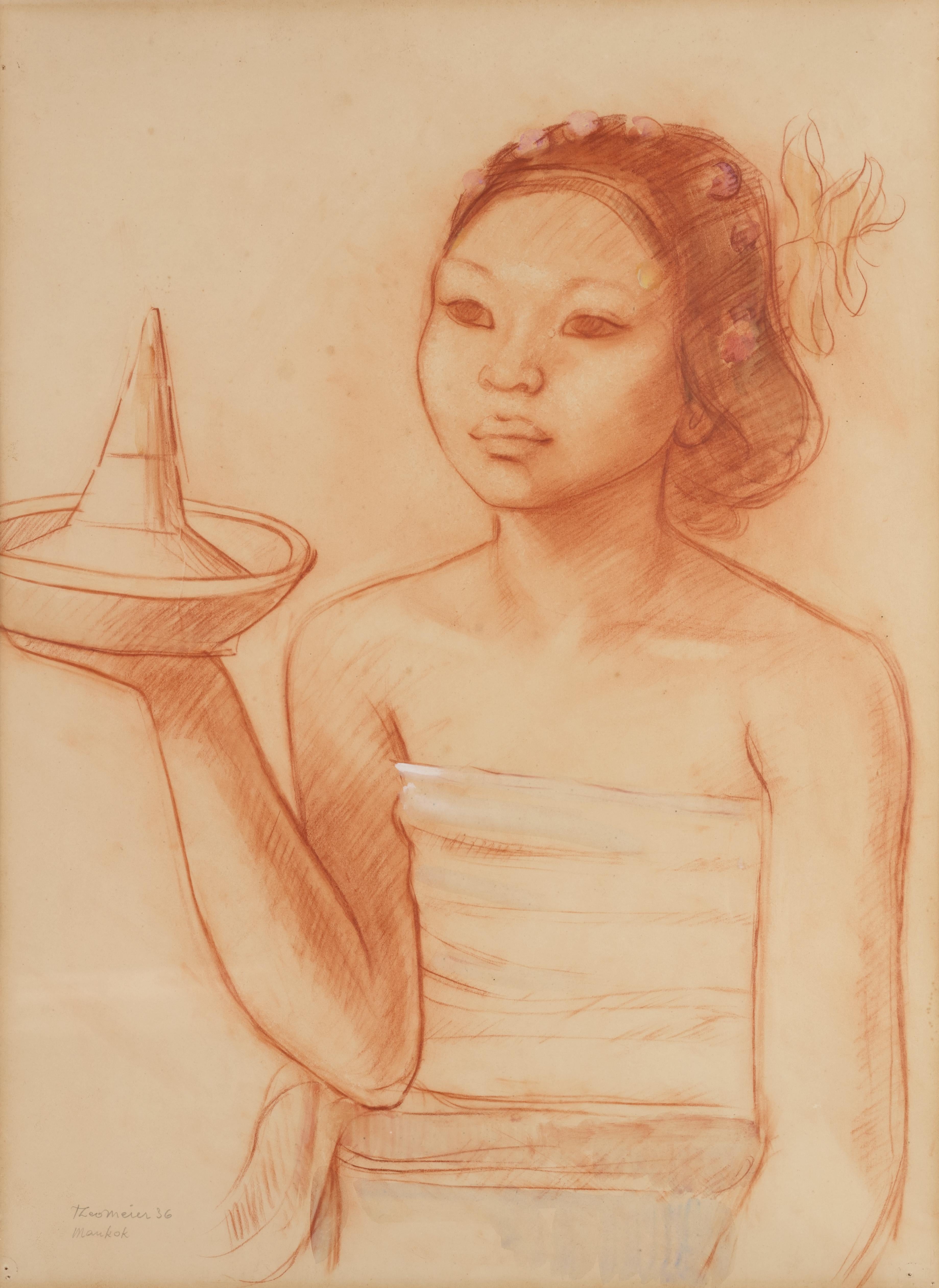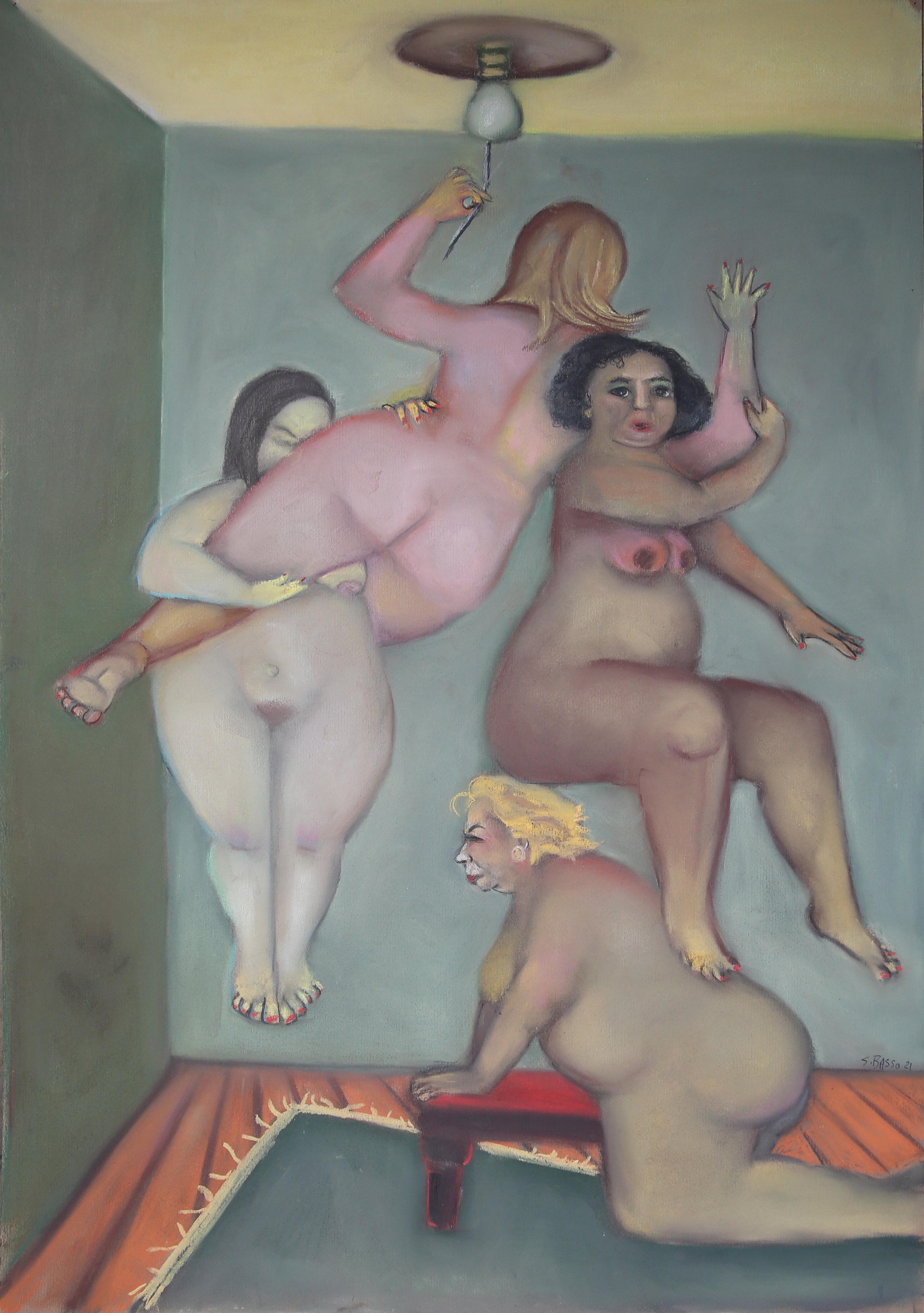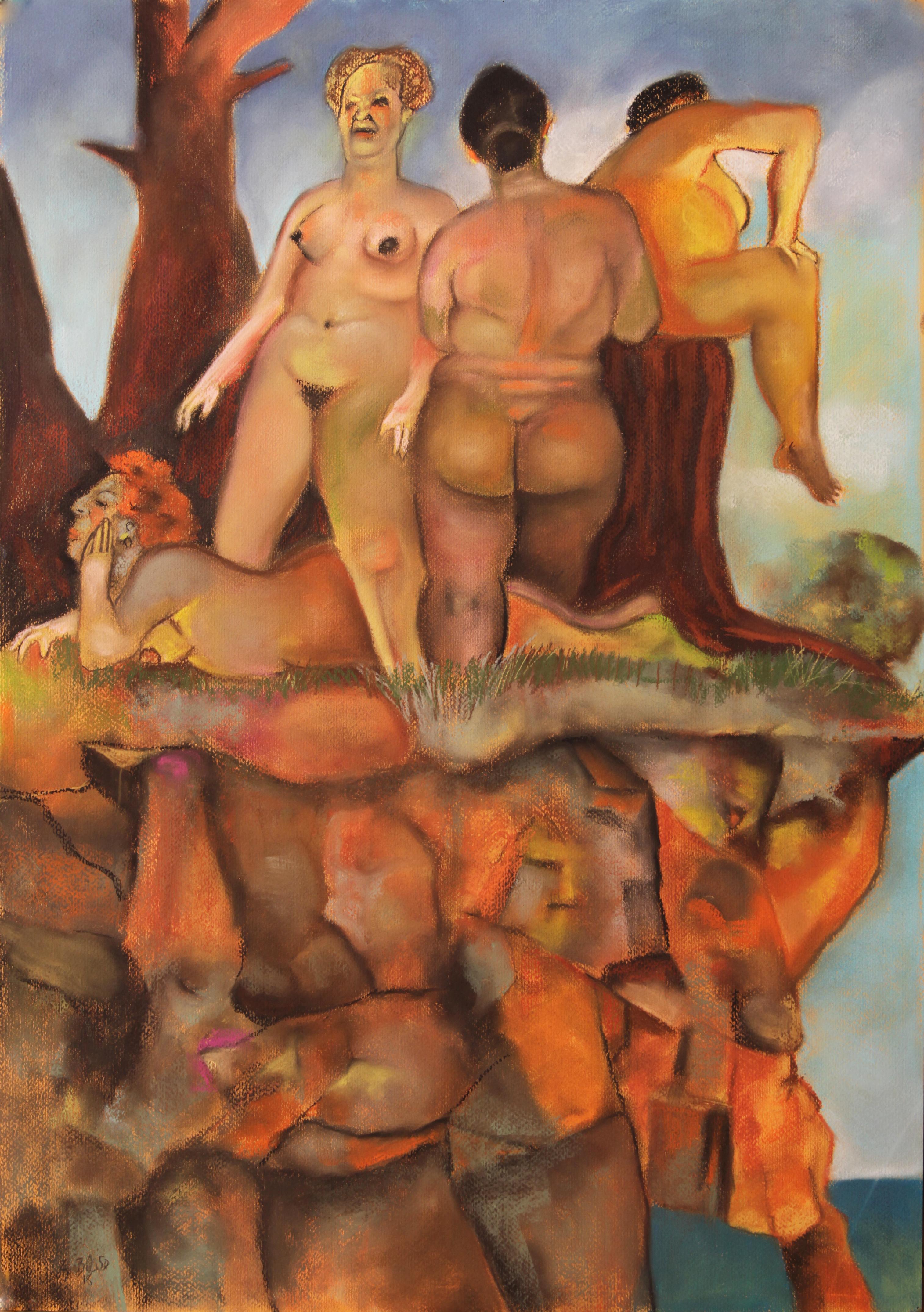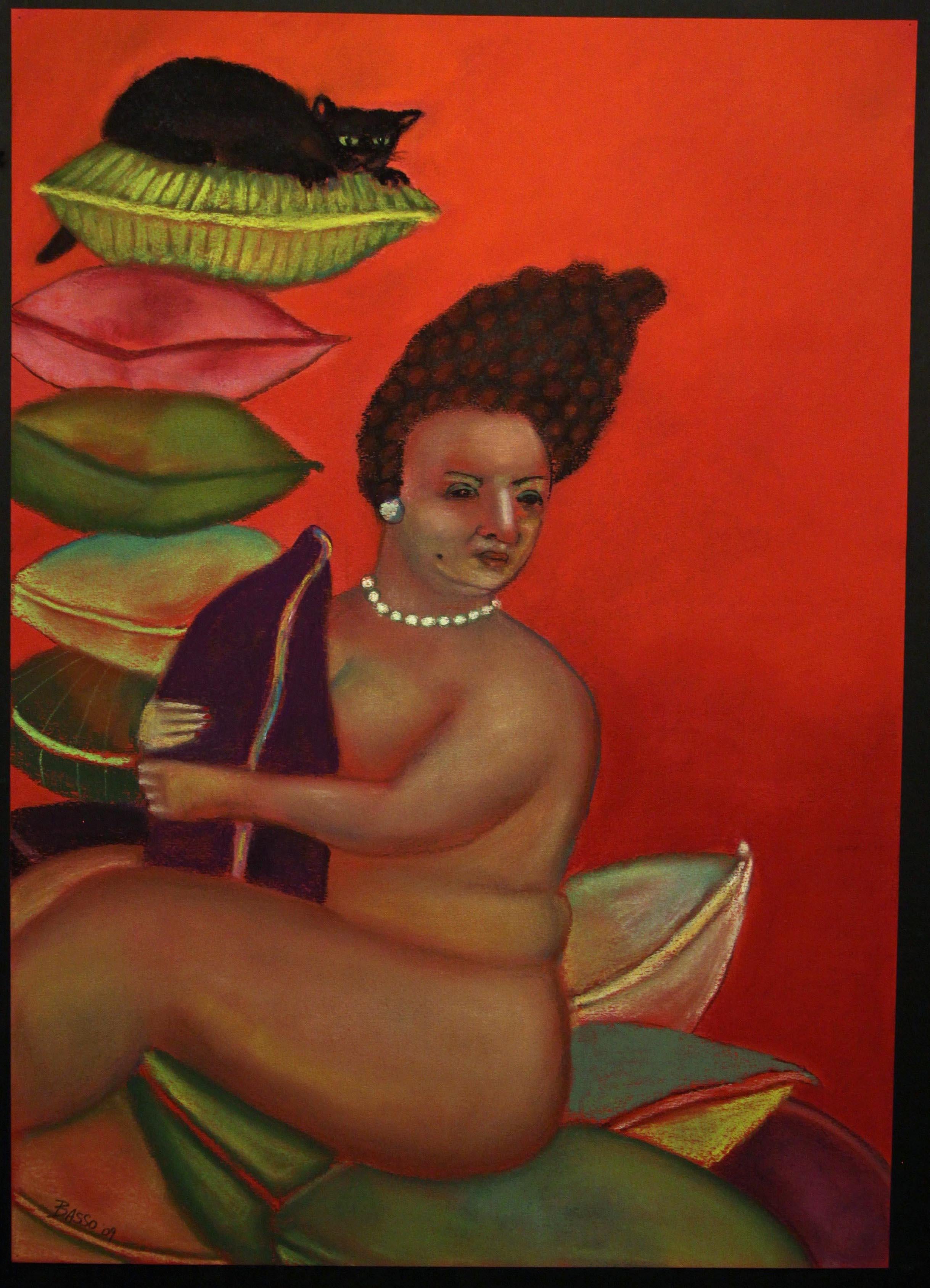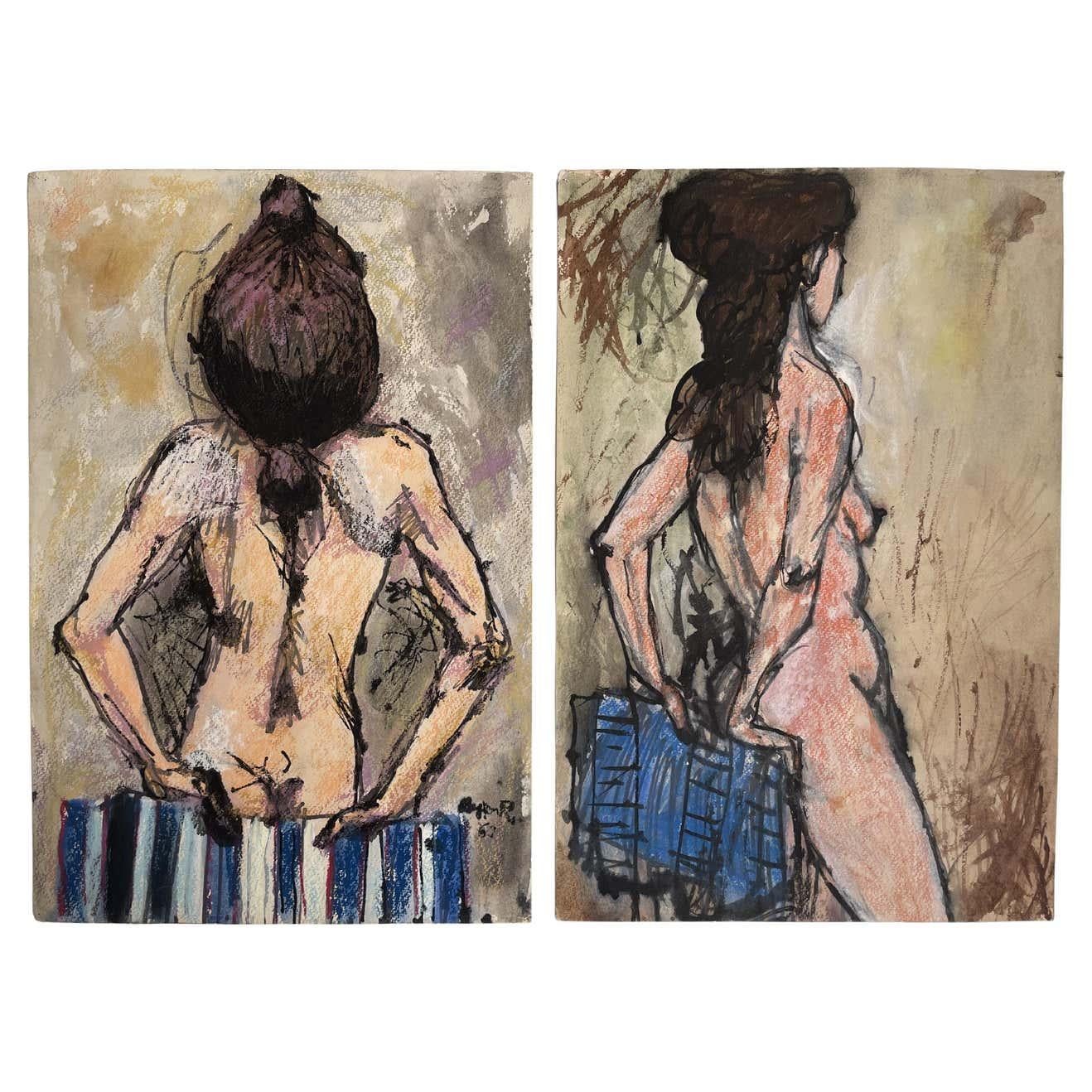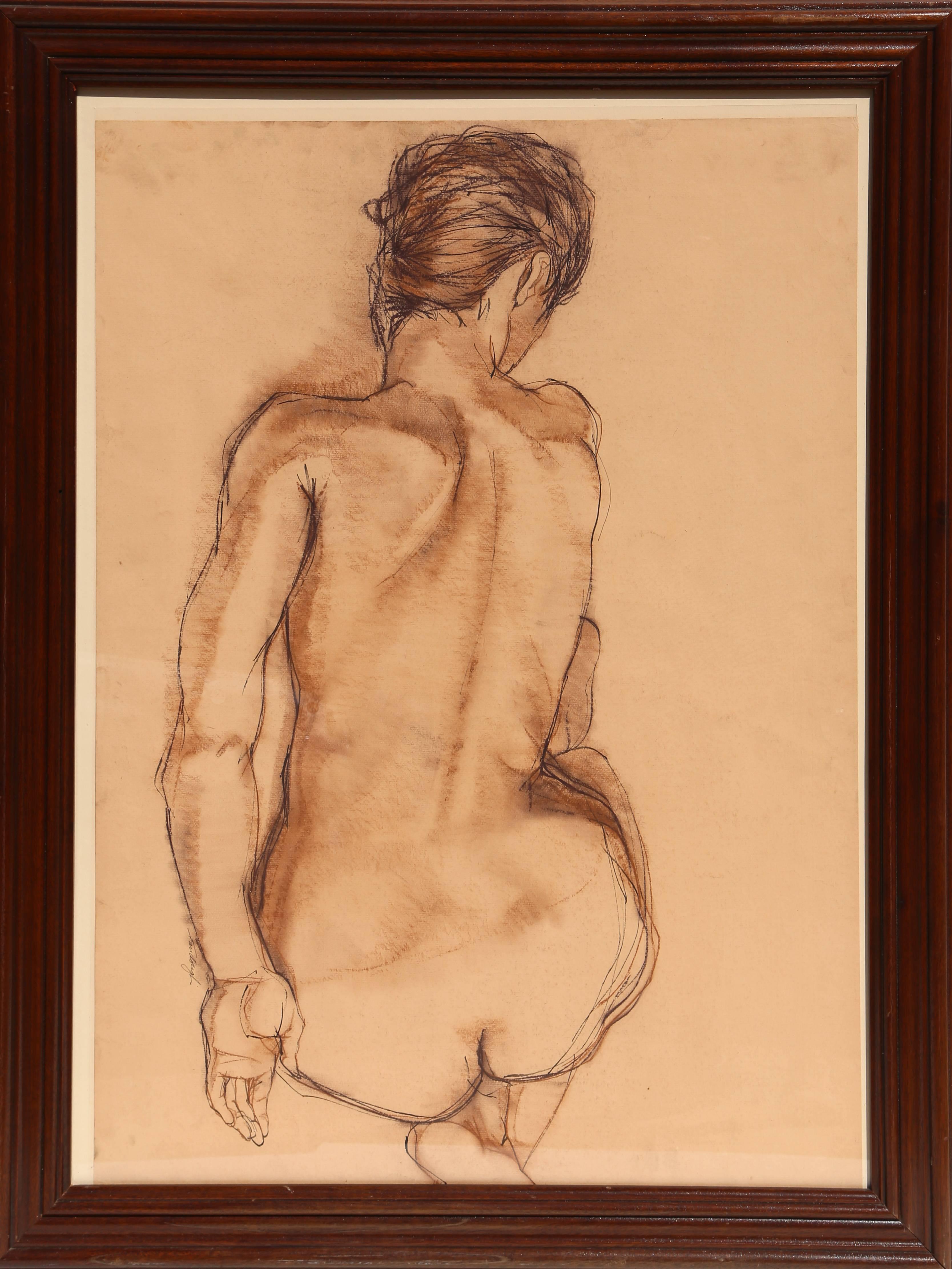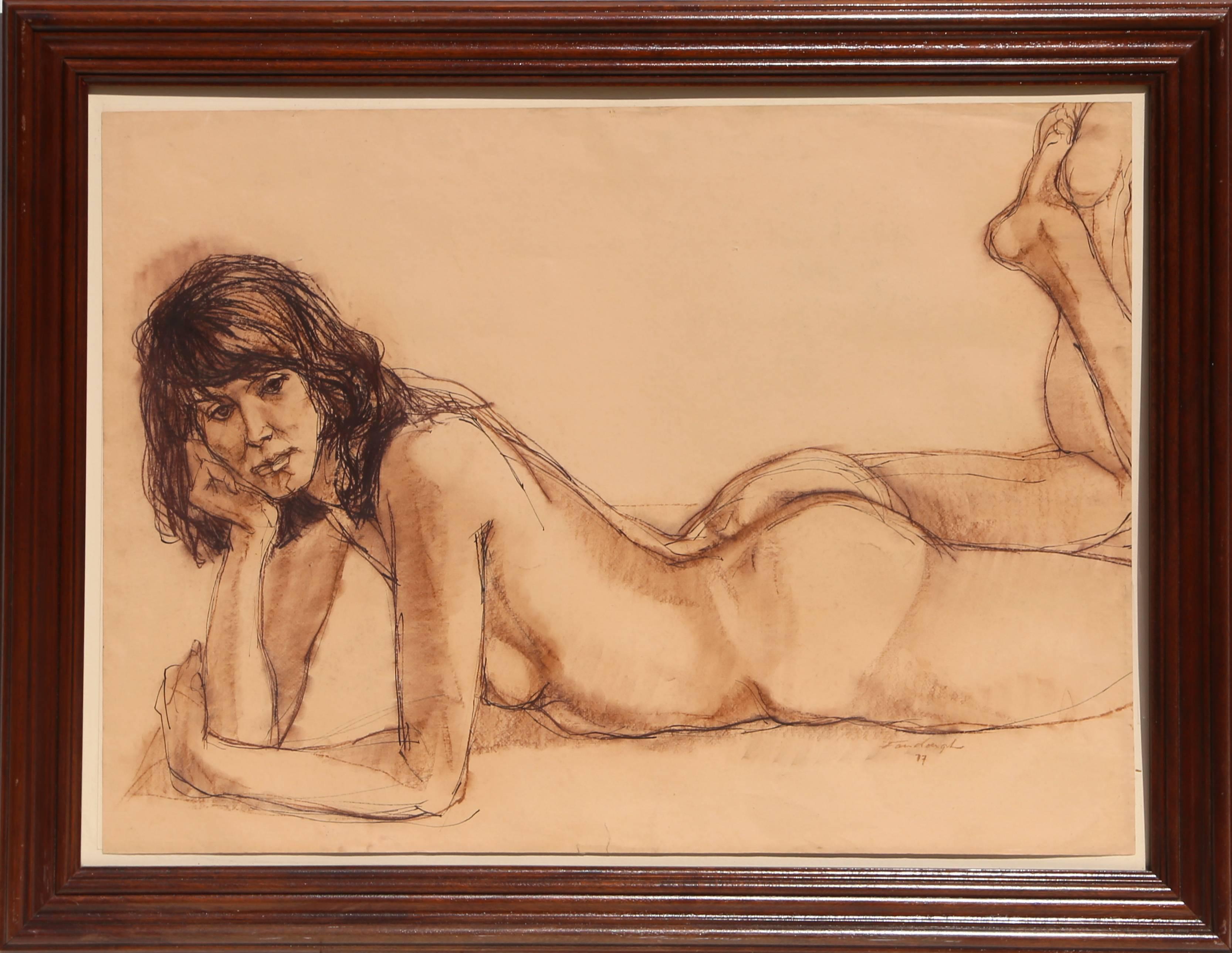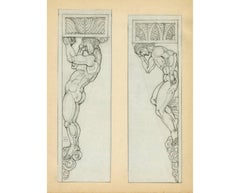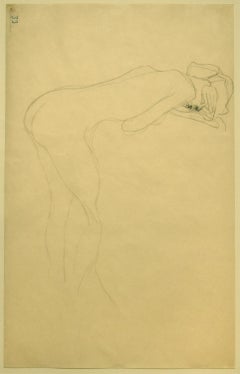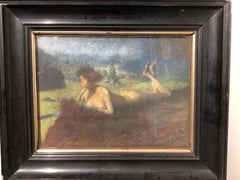
Contemplation
View Similar Items
1 of 8
Albert Jean Wilhelm GianiniContemplation circa 1900
circa 1900
About the Item
- Creator:Albert Jean Wilhelm Gianini (1876, German)
- Creation Year:circa 1900
- Dimensions:Height: 14.18 in (36 cm)Width: 17.33 in (44 cm)Depth: 2.96 in (7.5 cm)
- Medium:Oil Pastel,Cotton Canvas
- Movement & Style:
- Period:
- Condition:
- Gallery Location:Paris, FR
- Reference Number:1stDibs: LU40732541563
You May Also Like
- Atlas Cornice Drawings 2 —Vienna SecessionistBy Heinrich Brad SchmidtLocated in Myrtle Beach, SCTwo early 20th-century Vienna Secessionist, male nude cornice drawings. Graphite on pale blue/grey wove drawing paper, spot glued by the artist to ...Category
1920s Vienna Secession Nude Drawings and Watercolors
MaterialsPencil
- Atlas Cornice Drawings 1 — Vienna SecessionistBy Heinrich Brad SchmidtLocated in Myrtle Beach, SCHeinrich Brad Schmidt, two early 20th-century German Secessionist, male nude cornice drawings. Graphite on pale blue/grey wove drawing paper, spot ...Category
1920s Vienna Secession Nude Drawings and Watercolors
MaterialsPencil
- Nude of Woman Reclined on the Back of a Chair on the Right, Original DrawingBy Gustav KlimtLocated in Roma, ITNude of Woman Reclined On the Back of a Chair on the Right is an original drawing realized by Gustav Klimt between 1904 and 1906, probably in 1905, as stated in the Catalogue Raisonn...Category
Early 1900s Vienna Secession Nude Drawings and Watercolors
MaterialsCharcoal
- La femme préhistorique (Prehistoric Woman)By James Jacques Joseph TissotLocated in New Orleans, LAJames Tissot was among the most successful and critically acclaimed artists of the Victorian era. Although the artist is celebrated for his elegant scenes of fashionable life in Paris and London, this work is a fascinating rarity within his oeuvre. In this monumental pastel, Tissot depicts a prehistoric woman draped in a tiger skin, presented with a striking pose and heroic air. His delicate portraiture, combined with his fascination with conveying texture, demonstrates why he was one of the most revered artists of his generation, and La femme préhistorique illustrates the remarkable technique for which he was renowned. This work was completed in preparation for a series of works exploring the Old Testament undertaken by Tissot from 1899-1902 that remained unfinished at the time of his death. A portion of this series focused on illustrations of Adam and Eve, and among these sketches were images of a nude Eve partially draped in animal furs. Towards the end of his life, following his conversion to Catholicism, biblical subjects became important to the artist. A few years before this work was completed, Tissot embarked upon a highly ambitious group of nearly 300 watercolors illustrating the New Testament, presenting the illustrated epic in its entirety at the Paris Salon of 1894. Both of these series were a critical artistic departure for the artist, stemming from a desire to create works separated from his typical images of modern society. This pastel imagines Eve as the prototype of womanhood in the guise of a prehistoric woman. Tissot rarely painted the nude, and his skill as a draftsman highlights the figure's natural beauty, contrasting it with the stark landscape surrounding her. Although a study, this monumental work is incredibly well-finished and highly engaging, with the statuesque model commanding the majority of the canvas. Her pose is strong and theatrical, and she addresses the viewer with a direct, confident gaze. The imagined historical subject of this drawing is grounded by Tissot’s exceptional attention to detail. A master of conjuring an array of textures, Tissot showcased this ability in this work by juxtaposing many types of fabrics and natural elements within one composition. The tiger skin with which the woman partially covers herself was a favorite studio prop of Tissot’s, appearing in many of his most influential works from the period, including several paintings of his partner and favorite model Kathleen Newton. It, in particular, showcases the artist’s understanding of texture, yet it also serves as an exotic element that elevates the sensuality of the scene when placed against the woman’s bare skin. Born in 1836 in the port town of Nantes, Tissot traveled to Paris at the age of 20 in order to join the studios of Hippolyte Flandrin and Louis Lamothe. During this period, he became close with James Abbott McNeill Whistler, Edgar Degas and Edouard Manet, and the impact of these friendships is reflected in his portraits of modern life. Having enjoyed considerable success in Paris during the 1860s, Tissot fought in the Siege of Paris, and after the fall of the Commune in 1871, he went to London, where he stayed for the next ten years. He was met with incredible success there, and he also met the love of his life, Kathleen Newton, a divorcée, with whom he lived from about 1876 until her death in 1882. Today he is regarded among the great masters of Belle Époque painting, and his works can be found in important collections worldwide, including the Metropolitan Museum of Art, the Brooklyn Museum, the National Gallery of Art, the Musée d’Orsay, the Tate Gallery and many others. This pastel remained in Tissot's private collection until his death in 1902 and is referenced in the posthumous 1902-3 valuation of Tissot's home at 64 avenue du Bois...Category
Early 20th Century Academic Nude Drawings and Watercolors
MaterialsLaid Paper, Canvas, Oil Pastel, Pastel
- “A Balinese woman with offerings” (1936)By Theo MeierLocated in Amsterdam, NLTheo Meier (1908-1982) “A Balinese woman with offerings” Signed, dated '36 and annotated Mankok (the name of the sitter) lower left Sanguine on paper, measures: 57 x 41.5 cm In a handmade and hand painted frame with address: Max Kno¨ll, Herberggasse 4/1, Basel. Provenance: Private collection, Basel (acquired directly from the artist) Private collection, London Note: Theo Meier was born in Basel, where he attended art school and became a successful portrait painter. However, after visiting an exhibition in Basel of Tahitian paintings by Paul Gaugin, he decided to follow in Gaugin’s footsteps and go to the South Pacific. To finance his voyage, he founded a club in which every member pledged a monthly sum in return of which they could choose one of Meier’s paintings upon his return. In 1932, at the age of 24, he embarked on his voyage to the South Sea. In Tahiti, he certainly discovered the beauty of the colours of the tropical world but the simplicity of the inhabitants, he had seen in Gaugin’s paintings turned out to be more in the artist’s fantasy than in reality. He returned to Basel but in 1935 again was on his way to the South Sea. In 1936 he arrived in Bali, planning to stay there for two or three weeks, but thirty years later he was still there. In Bali “a delirium laid hold of me which even today has not subsided”, he was to write much later. The present drawing was made during his first “delirius” year in Bali. In Bali, he settled and found inspiration and friendship with other artists including Walter Spies...Category
1930s Expressionist Portrait Drawings and Watercolors
MaterialsPaper, Crayon
- Energy Saving Nudes multiple female Nude figures humorous overtones soft colorsBy Stephen BassoLocated in Brooklyn, NYSoft pastel on toned on toned Archival heavyweight paper.signed and dated on.bottom. part on an ongoing series by the artist Nudes With Attitude .Category
2010s Expressionist Nude Drawings and Watercolors
MaterialsPastel, Archival Paper
